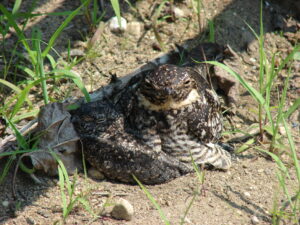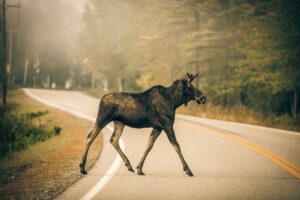(by Nisa Marks, Chair of the Board of Trustees)
The Endangered Species Act (ESA) has been an enormous success, preventing the extinction of at least 227 species (Scott et al. 2006; Schwartz 1999). But what does it mean in an era of climate change and increasing habitat loss? And what other tools might help ensure the future of biodiversity?

Globally, the International Union for Conservation of Nature (IUCN) reports that 13% of birds, 41% of amphibians, and 27% of mammals are threatened with extinction (IUCN). Habitat loss remains the largest threat, but climate change, invasive species, and disease are also significant and accelerating contributors to species’ decline. The ESA goes a long way in protecting species already dangerously close to extinction. Meanwhile, though, other tools are needed to maintain biodiversity and prevent species from getting to the point where they need the ESA’s protections. Here are a few of those tools, and how NH Audubon participates.
At the national level, New Hampshire Audubon has been a strong supporter of the Recovering America’s Wildlife Act (RAWA). RAWA would complement the ESA by providing funding to states to protect species whose populations are declining, but are not yet so critically small as to qualify for ESA protection. This is important because it is much cheaper and easier to recover species when they are still relatively abundant. Earlier intervention also preserves the ecosystem services that species provide, such as water filtration, erosion and flood control, and carbon sequestration.
New Hampshire would receive an estimated approximately $12 million per year if RAWA passed. This exceeds the entire current budget of the nongame program of NH Fish and Game uses to protect species of conservation need in the state. New Hampshire Audubon thanks the members of our congressional delegation, all of whom have previously signed to support RAWA and understand its potentially transformative importance to wildlife conservation in our state.

On the ground, one of the ways organizations can preserve habitat is to promote wildlife connectivity. By connecting habitats, wildlife can move as the areas of suitable habitat change. Connectivity also mitigates the effects of habitat fragmentation, where roads, houses, and infrastructure break up habitat and introduce “edge effects” like invasive species and nest predators. New Hampshire Audubon is working with partners to protect connectivity through projects like Bowman Crossing, a wildlife-safe road crossing in Randolph, NH.
In an increasingly globalized world, threats like climate change or plastics pollution will require global action. Many of the common backyard birds in New Hampshire, for example, migrate or overwinter in Central and South America. Threats there can dramatically affect how many of those birds return here to breed. The research done by New Hampshire Audubon’s scientists helps us understand how New Hampshire’s plants and wildlife are responding to emerging threats here and elsewhere, which in turn can inform our advocacy efforts.
As we celebrate 50 years of success of the ESA, it is important to recognize that research, education, legislative advocacy, and land protection are each an important part of the puzzle to protect species in need here in New Hampshire. Without those areas of action, many more species would need the protections of the ESA as they struggle to survive. We thank you for your support of our ongoing work and the ways it intersects with efforts to protect imperiled species.
(Cover image from Endangered Species Act at 50.)
